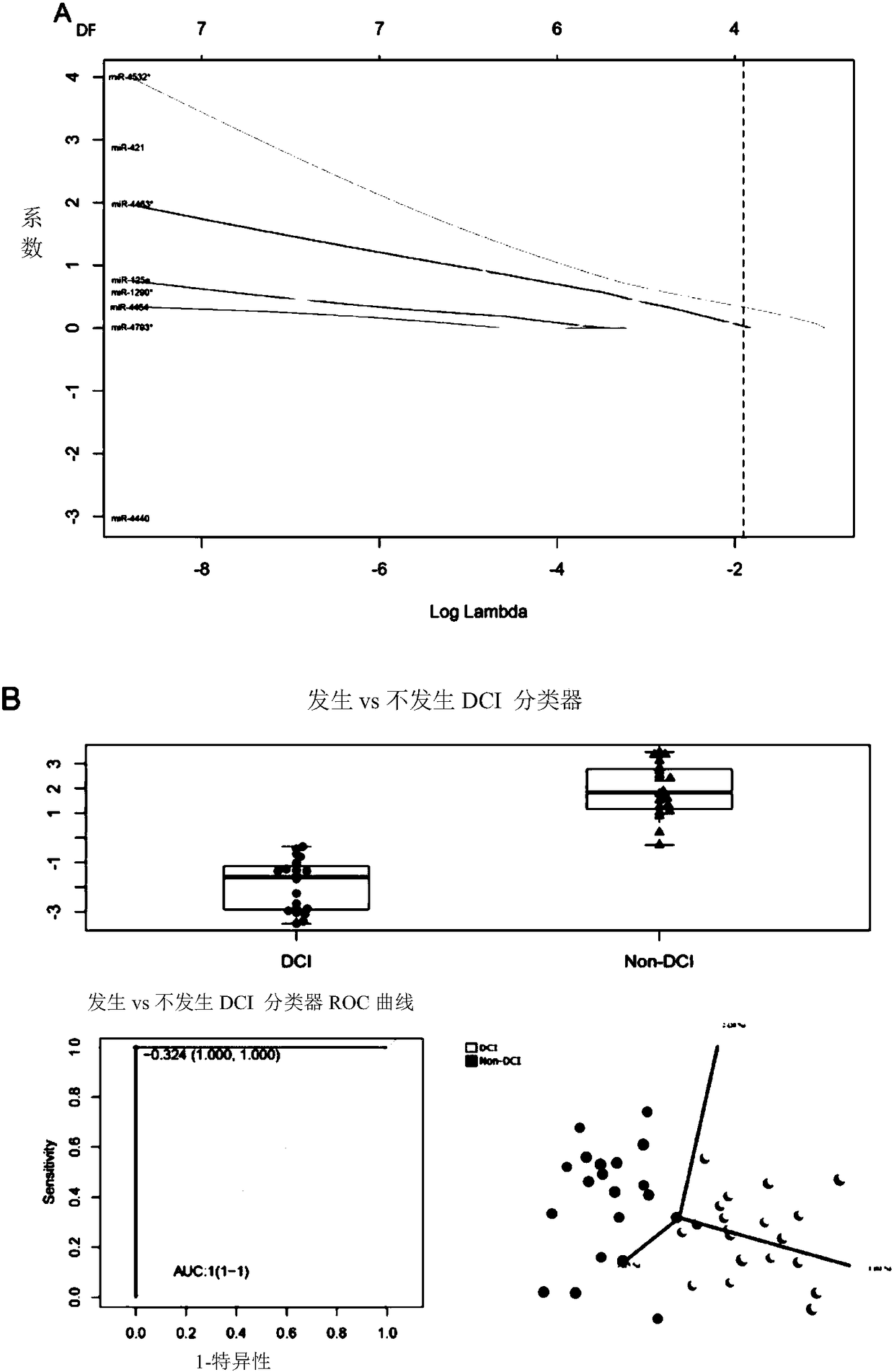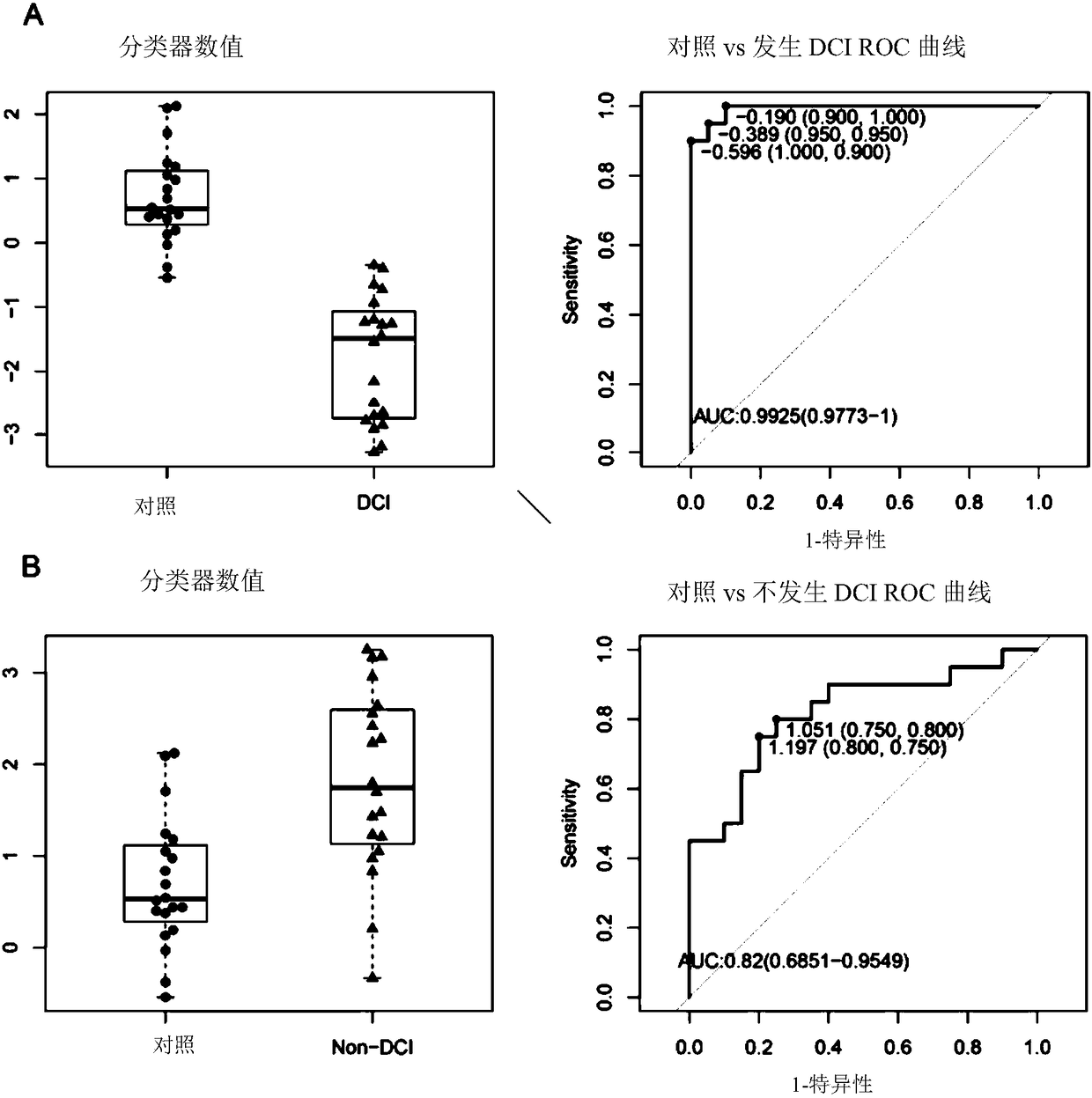Circulating microRNA biomarker for subarachnoid hemorrhage and application thereof
A technology of subarachnoid space and mir-4532, applied in biochemical equipment and methods, DNA/RNA fragments, recombinant DNA technology, etc., can solve the problems of impaired quality of life and inability to return
- Summary
- Abstract
- Description
- Claims
- Application Information
AI Technical Summary
Problems solved by technology
Method used
Image
Examples
Embodiment 1
[0036] Embodiment 1 patient and sample
[0037] The study was approved by the Joint Committee on Clinical Research Ethics of the New Territories East Hospital Cluster-Chinese University of Hong Kong (NTEC-CUHK), and written informed consent was obtained from all participating patients or their closest blood relatives. On day 7 after SAH in healthy controls (N=20), subarachnoid hemorrhage (SAH) patients with delayed cerebral infarction (DCI) (N=20), SAH patients without DCI (N=20 ) on the 7th day after SAH, peripheral blood miRNA was collected. SAH patients were from Prince of Wales Hospital, Chinese University of Hong Kong from 2012 to 2013. Ruptured brains were diagnosed by computed tomography angiography (CTA). In contrast to SAH patients, healthy controls (n=20) were recruited from family members of SAH patients without significant medical risks, including no smoking history and hypertension. The condition and signs of the patients are shown in Table 1.
[0038] Table 1...
Embodiment 2
[0042] Embodiment 2 Delayed cerebral infarction (DCI) definition
[0043] In this study, delayed cerebral infarction (DCI) was defined as cerebral infarction identified by CT after excluding procedure related infarction (Wong GK et al., Journal of neurology, neurosurgery, and psychiatry. 2012; 83 : 1112-1117; Vergouwen MD et al., Proposal of multidisciplinary research group. Stroke; a journal of cerebral circulation. 2010; 41:2391-2395). Surgery-related infarction refers to the hypodense area shown on postoperative CT at about 12-24 hours after treatment. All patients participating in the study underwent CT time-lapse scanning after 2-3 weeks. DCI was diagnosed by consensus of two neuroradiologists.
Embodiment 3
[0044] Embodiment 3 real-time fluorescent quantitative PCR
[0045] Peripheral blood samples were obtained using EDTA tubes according to standard procedures. Samples were immediately placed on ice and centrifuged at 1000 g for 15 minutes at 4°C. Plasma fractions were collected and stored in aliquots at -80°C. RNA isolation and quantitative real-time PCR were performed according to conventional methods, including by adding 20% w / v CaCl 2 (Sigma, St. Louis, MO) was added to plasma samples to prepare serum, then clotted overnight and centrifuged. Total RNA was isolated from the resulting serum samples using the miRNeasy serum / plasma kit (Qiagen, Valencia, CA) according to the manufacturer's instructions. The amount of extracted RNA was measured by Nanodrop 2000 UV-Vis spectrophotometer (Thermo Scientific, Waltham, MA). Ct values and melting curves were analyzed using Applied Biosystems SDS software (Applied Biosystems, Waltham, MA).
[0046] A total of 28 specific miRNAs...
PUM
 Login to View More
Login to View More Abstract
Description
Claims
Application Information
 Login to View More
Login to View More - R&D
- Intellectual Property
- Life Sciences
- Materials
- Tech Scout
- Unparalleled Data Quality
- Higher Quality Content
- 60% Fewer Hallucinations
Browse by: Latest US Patents, China's latest patents, Technical Efficacy Thesaurus, Application Domain, Technology Topic, Popular Technical Reports.
© 2025 PatSnap. All rights reserved.Legal|Privacy policy|Modern Slavery Act Transparency Statement|Sitemap|About US| Contact US: help@patsnap.com



